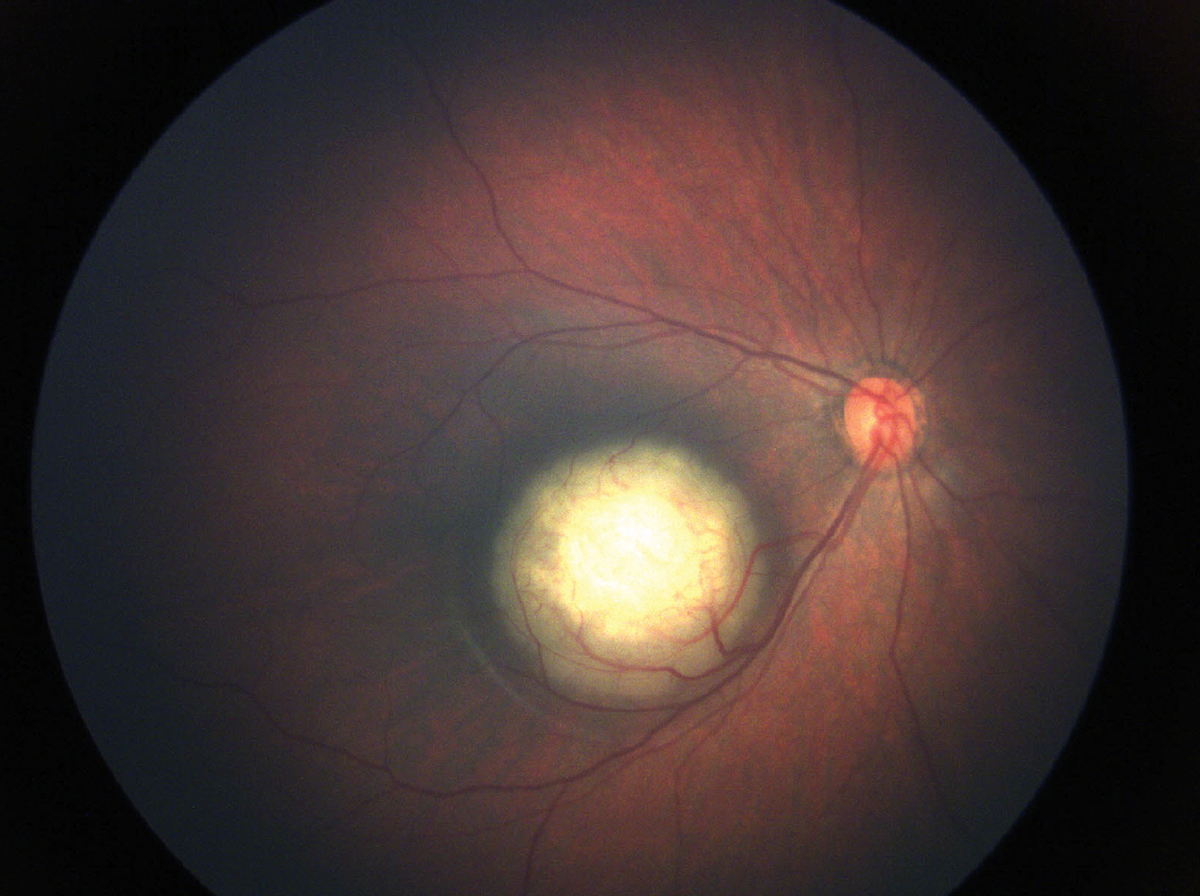 |
|
A multicenter study of 1,411 retinoblastoma patients reveals that the AJCC 8th edition pathological classification offers crucial prognostic insights, with adjuvant therapy significantly reducing the risk of recurrence, metastasis, and mortality in higher-risk pT3 and pT4 cases. Photo: Julia Canestraro, OD. Click image to enlarge. |
The 8th edition of the American Joint Committee on Cancer (AJCC) pathological classification provides prognostic insight for patients undergoing primary enucleation for retinoblastoma (RB), according to findings recently published in the journal Ophthalmology. Data showed that adjuvant therapy reduced the risk of orbital recurrence, metastasis and tumor-related mortality in those classified under the pT3 and pT4 categories.
This retrospective, multicenter, intercontinental collaborative study, which examined outcomes of retinoblastoma based on the AJCC pathological classification, included a total of 1,411 primarily enucleated eyes from 1,411 patients.
The primary outcomes were orbital tumor recurrence, tumor-related metastasis and tumor-related death. Study participants were grouped in the following categories based on the 8th edition AJCC pathological classification: pT1 (n=645, 46%), pT2 (n=164, 11%), pT3 (n=493, 35%) and pT4 (n=109, 8%).
“Category pT1 is assigned for tumors without any local invasion, or with focal choroidal invasion (≤3 mm), or with isolated prelaminar or laminar invasion,” the study authors outlined in their recent paper. “Category pT2 is assigned for tumors with local invasion, pT2a for combined focal choroidal and pre/laminar optic nerve invasion, and pT2b for tumors with invasion into iris stroma, trabecular meshwork or Schlemm’s canal.
“Category pT3 includes tumors with significant local invasion, pT3a includes choroidal invasion of >3mm in diameter as single or multiple foci, pT3b includes tumor with retrolaminar optic nerve invasion at the optic nerve head not reaching transected end, pT3c scleral involvement limited to inner 2/3rd, and pT3d includes tumors invading full-thickness sclera and/or invasion of emissary channels,” they continued. “Category pT4 is assigned to tumors beyond the sclera into the orbit/ adnexa and tumors that involve the transected end of the optic nerve.”
At a mean follow-up of 38 months, orbital tumor recurrence was reported in eight (1%), five (3%), 22 (4%) and 25 (23%) of pT1, pT2, pT3, and pT4 categories, respectively. Tumor-related metastasis was observed in seven (1%), five (3%), 40 (8%) and 46 (43%) of patients in the pT1, pT2, pT3 and pT4 groups, and tumor-related death was seen in 12 (2%), seven (4%), 64 (13%) and 64 (59%) of pT1, pT2, pT3 and pT4 categories, respectively.
This analysis revealed that both pT category and adjuvant therapy are independent predictors of outcomes among these patients. Data showed that categories pT3b, pT3c, pT3d and pT4 had a greater hazard for orbital recurrence and categories pT2a, pT3a, pT3b, pT3c, pT3d and pT4 had a greater hazard for tumor-related metastasis. Additionally, the study authors reported a greater hazard for tumor-related death in categories pT2a, pT2b, pT3a, pT3b, pT3c, pT3d and pT4 when compared to pT1.
“In this multicentric global cohort of patients who underwent primary enucleation, the pT category was predictive of orbital tumor recurrence, tumor-related metastasis and tumor-related death,” the study authors wrote in Ophthalmology. “Adjuvant therapy was associated with significantly improved survival in the pT3a, pT3b, pT3c and pT4 categories and is recommended.
“Adjuvant treatment for the pT1, pT2a and pT2b categories was not associated with any benefit. However, the risk was not 0% for these groups: low-risk categories pT1, pT2a and pT2b also had a cumulative incidence of tumor-related deaths of 2%, 4% and 8%, respectively, at five years,” they concluded. “Hence, the importance of follow-up should be emphasized to the caregivers. Although prophylactic adjuvant chemotherapy was not associated with significantly improved outcomes in pT2a and pT2b, the outcomes differ from the pT1 category and justify its separation from the latter in the AJCC classification.”
Vempuluru VS, Shields CL, Berry JL, et al. Retinoblastoma Outcomes Based on the 8th Edition American Joint Committee on Cancer Pathological Classification in 1411 Patients. Ophthalmology. September 6, 2024 [Epub ahead of print]. |


